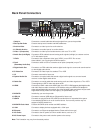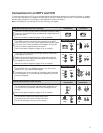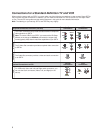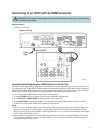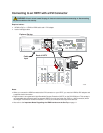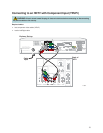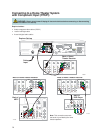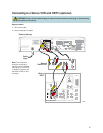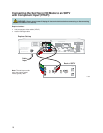9
Frequently Asked Questions
What is Digital Television?
Digital television (DTV) is a huge leap forward in television technology compared to analog television that has been
widely available since the 1940s. DTV is delivered and displayed using digital encoding, similar to the way a PC
operates. By using digital technology, there is no variation in picture and sound quality from the origination point until
it is displayed on your television. You always receive a high-quality picture without the wavy lines or static you might
sometimes get from a weak analog signal.
Because DTV receives and displays digital images that contain many times more picture elements (pixels - the small
dots that make up the color image on your screen) than standard analog television, you can get a sharper on-screen
image than with analog. Additionally, DTV supports CD-quality sound. DTV includes SDTV (Standard Defi nition
Television), EDTV (Enhanced Defi nition Television), and HDTV (High-Defi nition Television). That means that all
HDTV is digital, but not all digital TV is high-defi nition. A high-defi nition program must originate in HD format and be
broadcast in HD format. Having an HDTV system does not mean that everything you watch will be in high-defi nition.
Getting the signal from digital cable also does not mean it is high-defi nition.
What is Standard-Definition Television?
Standard-defi nition television (SDTV) is basic digital television programming delivered by cable. Typically, the SDTV
screen is the same, nearly square shape as an analog television screen. Digital images on an SDTV set are crisp
and clear—noticeably better than on a standard analog television set using an antenna to receive over-the-air
signals.
What is High-Definition Television?
High-defi nition television (HDTV) is a completely new way to send and receive television broadcast signals. HDTV
images are made up of pixels that are much smaller and closer together than those used in standard analog
television, and there are millions of them. Thus, HDTV can display fi ve to six times the detail of analog television
to deliver picture quality that is much more realistic, dimensional, and precise. SDTV programs can be viewed on
an HDTV. Another feature of HDTV is digital surround sound using Dolby
®
Digital technology, which is the same
technology used to produce the sound you hear in movie theaters.
Are Local TV Stations Broadcasting in HDTV?
Many local TV stations are transmitting digital signals. However, transmitting a digital signal does not mean
transmitting an HDTV signal. Some stations are using the new bandwidth to broadcast several standard-defi nition
channels. Most stations, once they begin broadcasting in digital, are offering HD content from their parent network
(for example, CBS, ABC, NBC, Fox, WB, UPN, and PBS).
Where Are the Connection Diagrams?
The diagrams at the end of this guide show examples of common ways to connect the set-top to your HDTV, DVD,
and home theater receiver. However, these diagrams do not show every possible combination of devices. Refer to
the user guides that came with your other electronic devices for further information.
What Cables Do I Need?
Some of the cables and adaptors shown in the diagrams may not be included with the set-top. Some of the required
cables are shown in the connection diagrams and on page vi of this guide.





